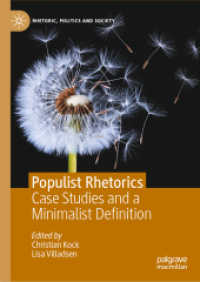- ホーム
- > 洋書
- > 英文書
- > Computer / General
Full Description
The main goal of this book is to teach fundamental programming principles to beginners using Julia, one of the fastest growing programming languages today. Chapter 5 formally treats with functions, enabling a (large) program to be broken up into smaller manageable units which work together to solve a given problem.








